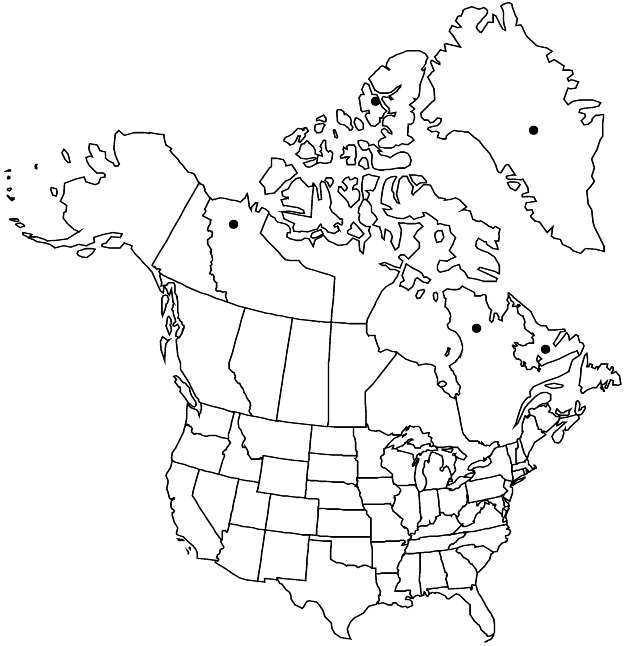Difference between revisions of "Cerastium arcticum"
in G. C. Oeder et al., Fl. Dan. 17(50): 7, plate 2863. 1880.
FNA>Volume Importer |
FNA>Volume Importer |
||
| Line 72: | Line 72: | ||
|publication year=1880 | |publication year=1880 | ||
|special status= | |special status= | ||
| − | |source xml=https://jpend@bitbucket.org/aafc-mbb/fna-data-curation.git/src/ | + | |source xml=https://jpend@bitbucket.org/aafc-mbb/fna-data-curation.git/src/f6b125a955440c0872999024f038d74684f65921/coarse_grained_fna_xml/V5/V5_161.xml |
|subfamily=Caryophyllaceae subfam. Alsinoideae | |subfamily=Caryophyllaceae subfam. Alsinoideae | ||
|genus=Cerastium | |genus=Cerastium | ||
Revision as of 20:07, 24 September 2019
Plants perennial, loosely mat-forming but not pulvinate, rhizomatous. Stems erect, from decumbent base, 5–30 cm, sparsely to densely pubescent, hairs spreading, straight, often glandular; small axillary tufts of leaves usually absent. Leaves subsessile; blade broadly elliptic to obovate or rotund, larger blades in mid-stem region, 5–22 × 2–8 mm, apex round and obtuse, rarely broadly acute, pubescence ciliate and strigose, hairs long and eglandular, mixed with shorter eglandular hairs, colorless to somewhat fuscous; proximal leaves not strongly marcescent, blade oblanceolate, often broadly so, spatulate. Inflorescences 1–3-flowered, lax cymes, with patent, multicellular, long, glandular hairs; proximal bracts broadly lanceolate, pubescence as leaves; distal bracts narrowly lanceolate, margins narrow, scarious, glandular-pubescent. Pedicels ± straight or somewhat curved at apex, 5–45 mm, 1–4 times as long as sepals (rarely longer), pubescence long and glandular. Flowers: sepals narrowly lanceolate, 8–11 mm, margins narrow, apex acuminate, hairs ascending, long, glandular and eglandular; petals 12–18 mm, 1–2 times as long as sepals, apex 2-fid; stamens 10; styles 5. Capsules broadly conic, straight or almost so, 14–18 mm, 1.5–2 times as long as sepals, teeth 10, ± erect, margins convolute. Seeds red-brown, 1.1–1.3 mm diam., tuberculate; tubercles acute; testa not inflated, closely enclosing seed. 2n = (54) 108.
Phenology: Flowering summer.
Habitat: Arctic tundra and solifluction areas, talus slopes, beaches, coastal grassland and seepage areas, exposed rocky headlands
Elevation: 0-400 m
Distribution

Greenland, Nfld. and Labr. (Labr.), N.W.T., Nunavut, Que., n Europe (Franz Joseph Land, Novaya Zemlya, Svalbard).
Discussion
Cerastium arcticum has been a much confused and misunderstood species, recently separated from C. nigrescens Edmonston ex H. C. Watson on seed characters. The latter has large seeds with loose, inflated testae, whereas C. arcticum has seeds that are smaller and have tight testae that cannot easily be removed (A. K. Brysting and R. Elven 2000). Much of the North American material previously placed in C. arcticum is now considered to belong to a distinct species, C. bialynickii Tolmatchew (see comments under that species). Cerastium alpinum differs from C. arcticum in having very long, flexuous, translucent hairs which often mat together. In C. arcticum and other members of the complex, the hairs are usually straight, yellowish, and not flexuous. Cerastium arcticum may on occasion have some pubescence like that of C. alpinum; such plants have been named C. arcticum var. vestitum. Whether they represent introgression of C. alpinum into C. arcticum, as suggested by E. Hultén (1956), is uncertain.
Selected References
None.